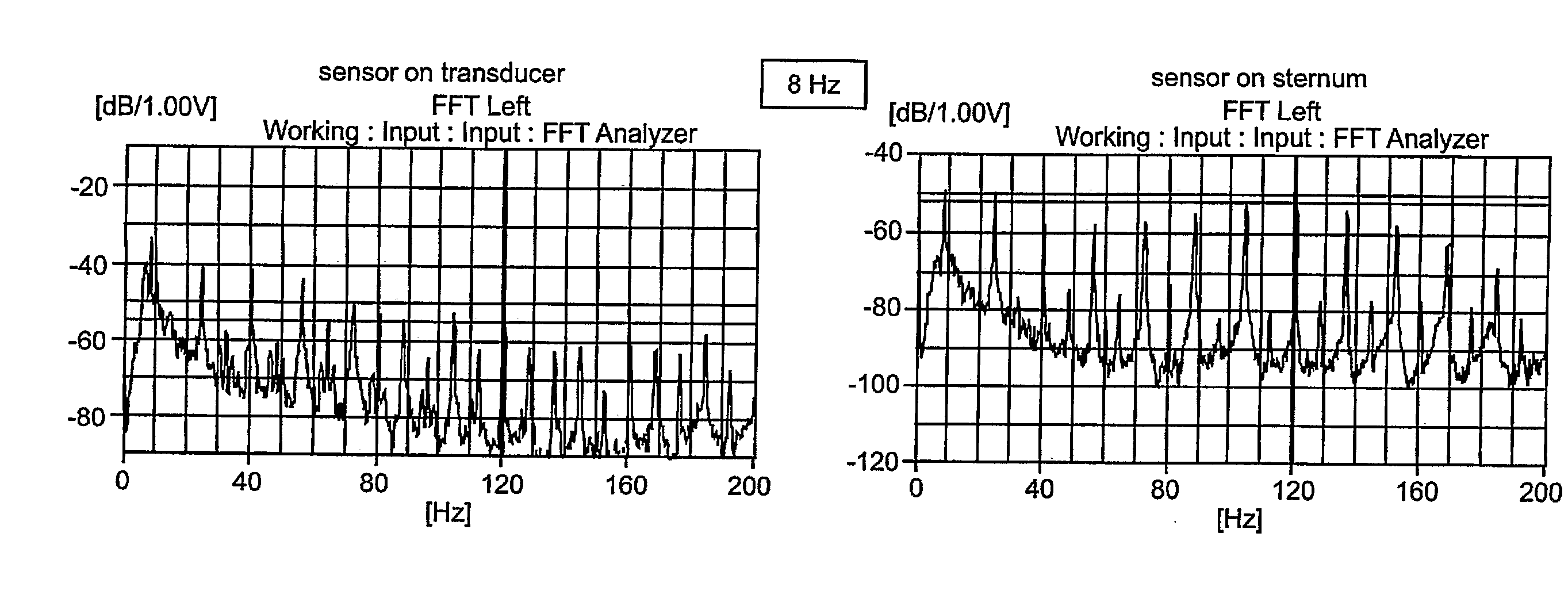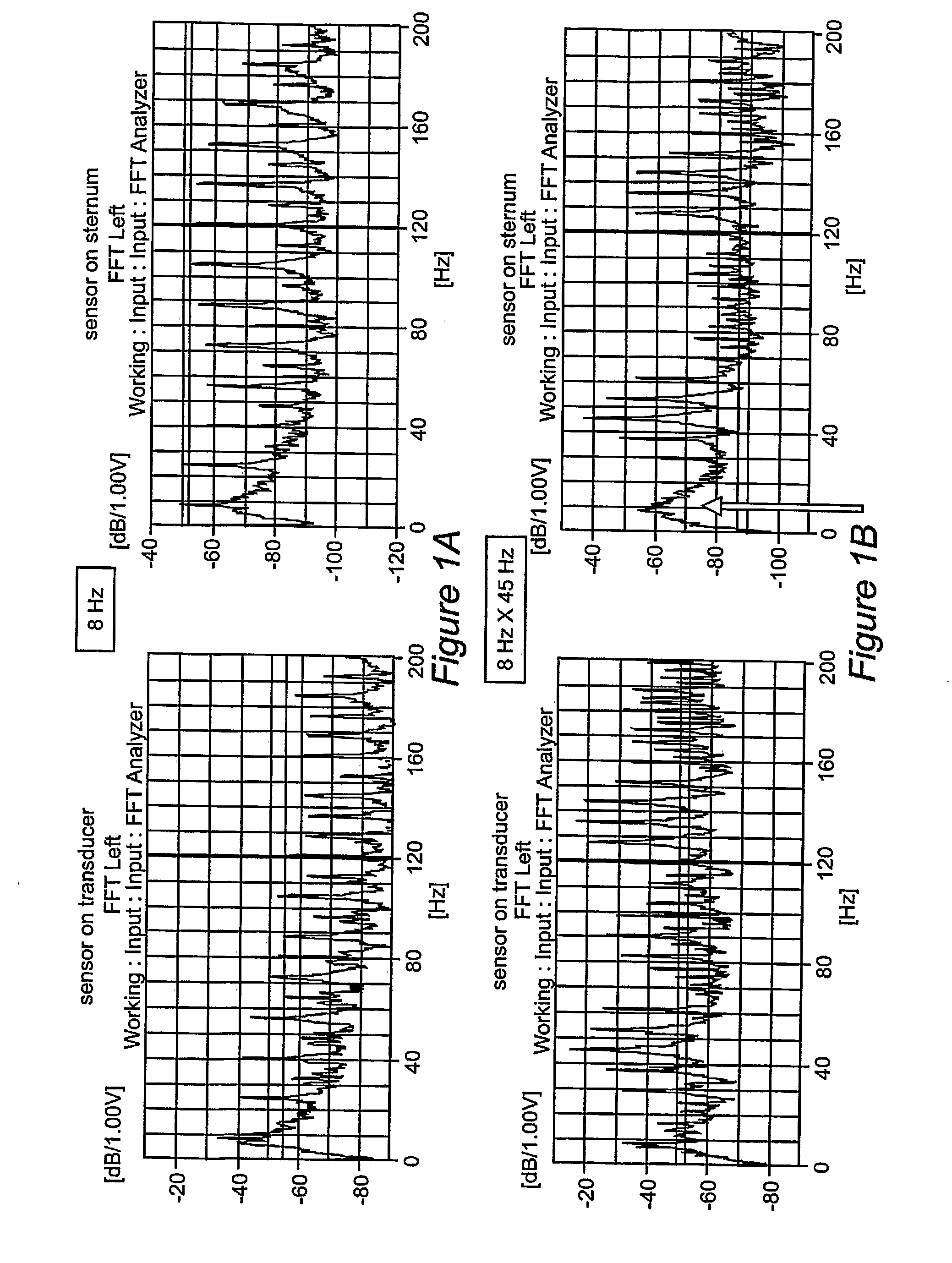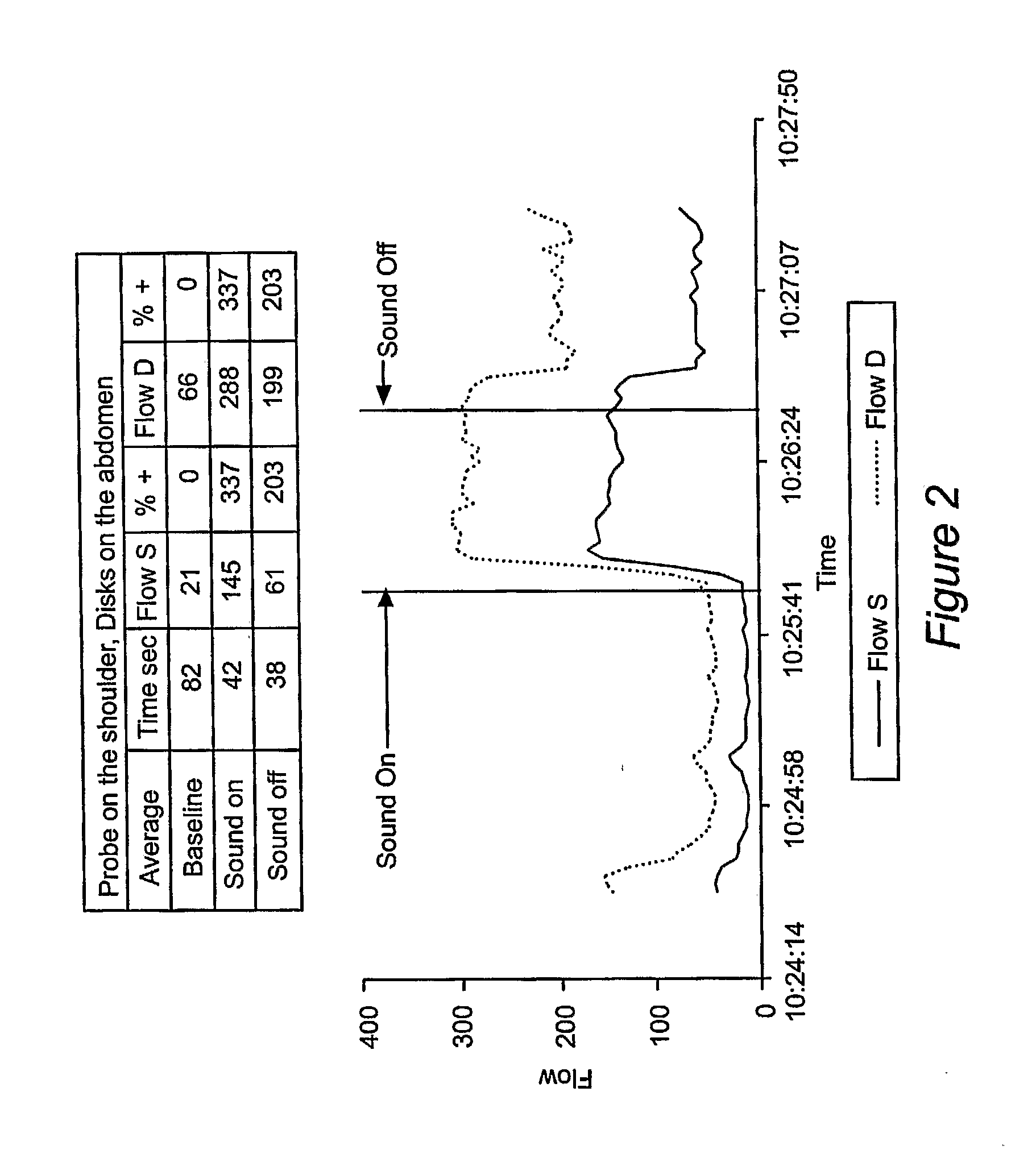Acoustical-Based Tissue Resuscitation
a tissue resuscitation and acoustic technology, applied in the field of acoustic vibrational based methods, can solve the problems of invasive and associated with various complications, rapid damage or death of affected tissue, and approved uses, and achieve the effects of convenient use, low cost of devices, and easy adaptability to a wide variety of situations
- Summary
- Abstract
- Description
- Claims
- Application Information
AI Technical Summary
Benefits of technology
Problems solved by technology
Method used
Image
Examples
example 1
Demonstration of Transmission of Acoustical Energy Through Skin and into Underlying Tissue
[0045] In order to overcome this problem, a modulated signal was used. According to the mathematics of vibration, amplitude modulation is the multiplication of one frequency by another. For example, if a frequency of 8 Hz is modulated by a 40 Hz frequency, the resulting frequency, when propagated through a liner medium, will be the carrier (40 Hz)±8 Hz. However, if the frequencies are propagated through a non-linear acoustic system (e.g. water, or biological tissue such as skin) the combined signal demodulates into the component frequencies of 40 Hz and 8 Hz. Theoretically, this provides a way to introduce an 8 Hz signal into tissues within the body in a facile manner.
[0046] This can be illustrated as follows:
Modulation=8 by 45 Hz
AM=(1=cos Ωt×cos ωt
[0047] where Ω=2πF [modulating ˜] and ω=πf [carriers]
Demodulation=8,45 Hz
Demodulation Ω=ΩaFΩ[f2(t)], where a is an exponent=1.85.
[0048] In ...
example 2
Acoustical Pulsing at Various Locations of the Body
[0052] Experimental results were extended by applying acoustical signals to various parts of the body of a human subject. The acoustical vibration source was placed, in succession, on the feet, the chest, the back of the head, and the back. Changes in O2 levels in response to the changing position of the vibrational energy source were measured using a near infrared spectroscopy sensor located at the shoulder of the subject. This measures the aggregate tissue hemoglobin saturation level of the deltoid muscle at a depth of about 4 cm. As can be seen in FIG. 3, rapid increases in the level of tissue hemoglobin oxygen saturation occurs indicating that blood flow is improved to a point where there is more left over oxygen in the venous blood.
[0053] This example demonstrates again that improvements in blood flow and tissue oxygenation can be produced at locations which are removed from the area of blood flow and oxygenation monitoring m...
example 3
Acoustically Induced Blood Flow in an Animal Model
[0054] Similar experiments were carried out using a swine animal model. In this case, blood flow Doppler sensors were placed in muscle tissue of the pig. An acoustical signal of 8 Hz modulated by 45 hz was applied across the chest similar to that shown in FIGS. 6 and 7 and the results are presented in FIG. 4. As can be seen in the Figure, blood flow is increased.
[0055] In addition, the effect of acoustical stimulation on blood flow under conditions of low blood pressure were examined. One liter of blood was removed from the pig, and the experiment was repeated as above. The results are presented in FIG. 5, where it can be seen that blood flow to the region increased despite the fact that there was an overall reduction in blood volume. This provides evidence that the technique may be useful in the treatment of hemorrhagic shock.
[0056] This example demonstrates that even with a stopped heart, blood was forced from the body using vib...
PUM
 Login to View More
Login to View More Abstract
Description
Claims
Application Information
 Login to View More
Login to View More - R&D
- Intellectual Property
- Life Sciences
- Materials
- Tech Scout
- Unparalleled Data Quality
- Higher Quality Content
- 60% Fewer Hallucinations
Browse by: Latest US Patents, China's latest patents, Technical Efficacy Thesaurus, Application Domain, Technology Topic, Popular Technical Reports.
© 2025 PatSnap. All rights reserved.Legal|Privacy policy|Modern Slavery Act Transparency Statement|Sitemap|About US| Contact US: help@patsnap.com



